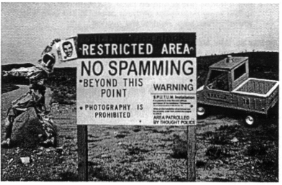

4

 |
 |
4 |
 |
|
The LA Fox Developer Newsletter
|
|
June
1998
|
|
Hot Tip...
by John Porter Hart, LA Fox
At the May meeting, I mentioned that I had had some success getting users to lay out their own messy reports. Bill Anderson thought that might be something of interest to the group.
The technique is fairly simple (for the developer):
1. The user lays out the report in MS Word with all the lines, boxes, etc. they require. Theyíve all had a lot of practice with this because of changing word processors, reorgs, and a recent sale of the company. Most departments have a local Word wizard--many of whom insist I canít possibly do justice to their masterpiece.
2. I take their .doc file and either embed it in a general field or link it (allowing user to change ďconstantĒ data without bothering me).
3. I include the general field in the report as an OLE object-- essentially itís wallpaper.
4. I then lay the header, detail, etc. data on the report & fiddle with it until it fits right (the report preview in 2.6 misregisters the general field with respect to the report data...).
The report is now done and
will
print satisfactorily on any Windows printer. Everything in the report--both form and content--gets printed at the resolution set for the particular printer.
Nothing gets the jaggies unless the user has imported a screen- resolution .bmp into the .doc file. Even then, it looks no worse than when it prints from Word. Anybody have a solution for this?
Each user must have access to Word at runtime even though they canít tell FoxPro is using it.
[Ed. Note: John will be giving a short demonstration of this technique at the beginning of this Mondayís meeting.J
From now until the end of June, MESLLC is offering a $25 discount on conference registrations. To take advantage of this great opportunity, you must register by June 30, 1998. With this special discount, your registration fee drops from $425 to $400 (if youíre paying by cash) and from $435 (full price) to $410 (if youíre paying by credit card). All registrations must be postmarked by midnight, June 30, and must contain the discount code of "OICU812" in the lower right-hand corner of the registration form. If you use this in conjunction with the B.A.F. program, you could realize substantial cost savings.
|
Unsolicited commercial e-mail (spam) is a serious problem on the Internet. If youíve been using the Internet for awhile, itís probably been showing up in your mailbox. If youíre new to the Internet, rest assured that as you branch out and explore the ĎNet, advertisers will get your e-mail address. Youíll soon start receiving get rich quick schemes, ads for sex or sex sites (and, no, you donít have to visit such a site to start getting advertising from them!), ads for various types of software, etc, etc, etc. Not only is this a bother for you and a waste of your time, it also costs you money. E-mail advertising (spamming) is of almost no cost to the advertisers, but takes storage space on your ISPs server and consumes Internet bandwidth. All of this translates into hard dollars, which then will be passed on to you in the form of higher costs. This is a serious problem now and will become worse in the future.
A similar problem with fax advertising cropped up a few years ago. Marketers started acquiring fax phone numbers and flooding fax machines with faxed advertisements. Again, this was a waste of the recipientís time and money. A great deal of my own fax paper was wasted on worthless, unwanted advertisements. Fortunately, Congress outlawed unsolicited fax advertising in the 1991 Telephone Consumer Protection Act and placed a $500 to $1500 fine on it. Additionally, the recipient could enforce the law by filing in a local court instead of having to rely on the government to move against anyone breaking the law. This has almost completely stopped fax advertising.
Certain groups (one being the Coalition Against Unsolicited Commercial E-Mail [CAUCE
at http://www.cauce.org])
have
|
|
[Ed. Note: This is a subject that affects just about anyone that goes on the Internet. Itís a subject of epic proportion...! call it ĎThe Virtual Disease of the 90ís and Beyond". Contributors are listed at the end of this article.J
|
|
Page 4
|

 |
 |
4 |
 |